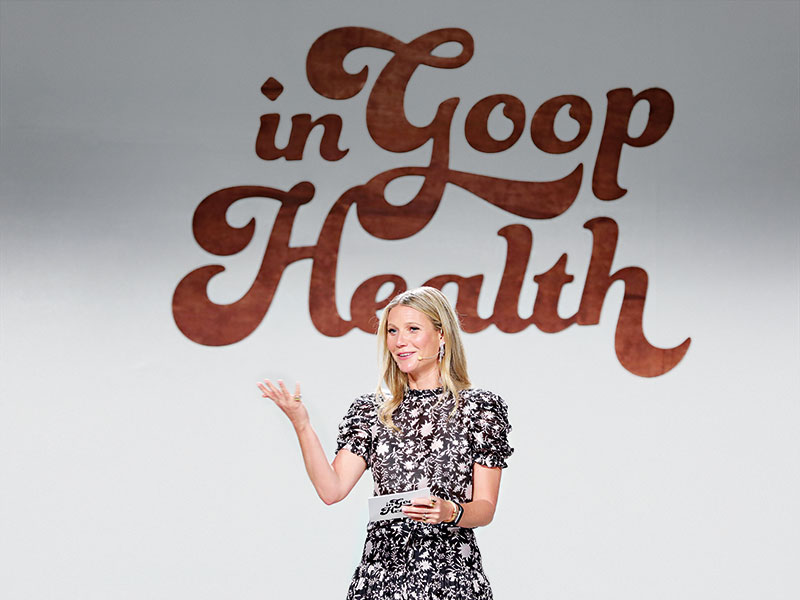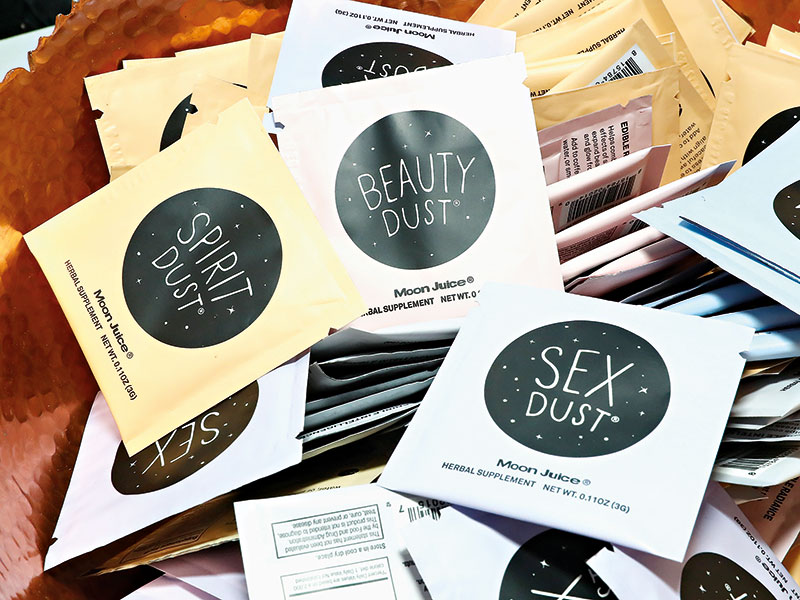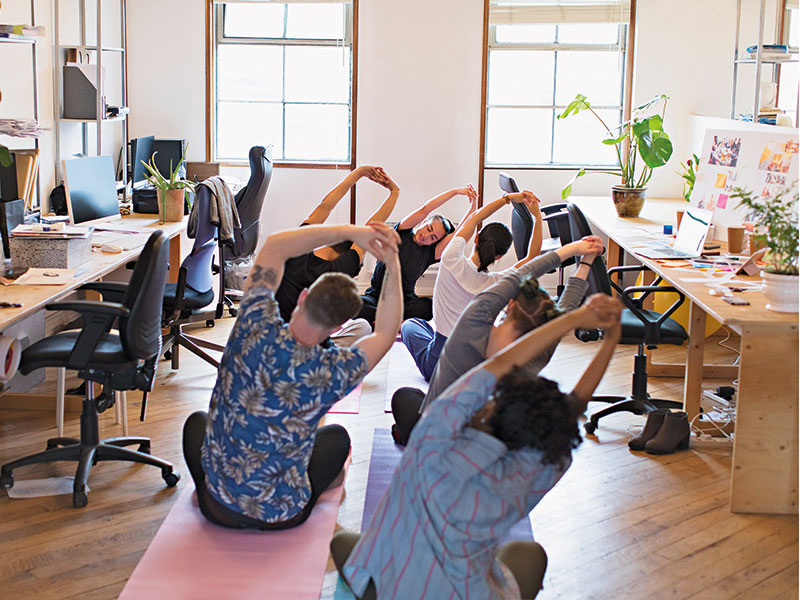
It’s interesting how a word can suddenly enter the social consciousness – how it can move quickly from some alternative sphere into the mainstream, becoming so deeply embedded in our everyday thinking that it’s hard to remember a time when it wasn’t there. The term ‘selfie’ may spring to mind, but there’s another word that has infiltrated the daily lexicon like no other: ‘wellness’.
To say that wellness came from nowhere is not entirely true. The term, which the Oxford English Dictionary defines as “the state of being in good health, especially as an actively pursued goal”, first gained ground some 50 years ago. Of course, there were movements in Europe pertaining to health before those now ascribed to the overarching notion: homeopathy, for example, was first popularised in 18th-century Germany.
It wasn’t until the 1970s, however, that a stream of fad diets and celebrity workouts, together with various concepts of self-care, really formed the basis of this now multitrillion-euro trend. The term itself was brought to the masses by journalist Dan Rather, who, speaking during a 60 Minutes segment on the then fringe movement, remarked: “Wellness – that’s not a word you hear every day.”
There’s a cream for that
According to the latest research by the Global Wellness Institute (GWI), the worldwide wellness market was worth a whopping $4.2trn (€3.5trn) in 2017. Clearly, wellness is no longer a marginal trend. In fact, the industry has become so vast that its numerous subsectors are themselves gargantuan: the personal care, beauty and anti-ageing industry, for example, is worth some €881bn; wellness tourism raked in €563bn last year; and individuals spent a collective €524.3bn on fitness and mind-body services. Even wellness real estate attracted €118.1bn.
For those wishing to promote their wellness, there’s a whole host of avenues to explore. Indeed, to indulge in at least one has almost become an expected social norm. For instance, yoga, meditation and detox retreats – once a foreign concept to the average consumer – have exploded in popularity. According to the GWI report, the wellness tourism sector’s 6.5 percent annual growth rate between 2015 and 2017 was more than double that of general tourism, with 830 million wellness trips made in 2017 alone.
There is a growing tendency within the general public to question traditional medicine and seek out alternative therapies
Even the average office now has a wellness programme in place, providing free fruit, subsidised gym memberships and, for some lucky souls, on-site massages. Workplace policies that help employees achieve a better work-life balance, such as flexitime and remote working, are no longer confined to the manifestos of exceptionally caring CEOs: they have become standard practice across Europe.
Outside of the office, there are hundreds (if not thousands) of creams, scrubs and cleansers targeted at every part of our bodies. Meditation, meanwhile, is no longer just a habit of the East: there is now a hoard of apps opening the practice to enthusiasts of any ability. Headspace, the best-rated among them, now has close to 30 million users in 190 countries. What’s more, meditation studios have been popping up across Europe, finding particular favour in London. Inner Space, for example, offers a series of courses that are ideal for beginners, while Re:Mind uses special filtrating plants and Himalayan salt lamps to ensure patrons can meditate in a toxin-free environment.
Exercise and fitness have also gained favour. According to Deloitte’s European Health and Fitness Market Report 2018, there are now 60 million fitness club members across Europe. With a total market volume of around €26.6bn, Europe’s fitness sector continues to be the world’s biggest.
Open mind
Better education and the democratisation of knowledge via the internet have undoubtedly contributed to the exponential growth of the wellness trend. As our awareness of our bodies has broadened, it seems, so has our definition of health, and what is required to maintain it.
Tim Caulfield, author, television host and professor of health law and science policy at the University of Alberta, told European CEO:
“I think there has been a recognition that health is more than just dealing with acute issues – health has to do with prevention, mental wellbeing, with your relationships to others and to the environment.”
Meanwhile, Dr Frank Lipman, a best-selling author, celebrity doctor and one of the leading practitioners of functional and integrative medicine, attributes the market’s expansion to the failure of traditional medicines: “Western medicine is great at crisis care, but not particularly good with preventing disease.”
Our unfortunate 21st-century food habits have also played a crucial role. “There is a global concern about our growing obesity rates due to processed and ‘convenient’ food, as well as our exposure to an exuberant amount of toxins daily,” Lipman told European CEO. “This has sparked a ‘back to basics’ approach and a realisation that food can be medicine.”
According to Lipman, this concern has ignited a growing tendency within the general public to question traditional medicine and seek out alternative therapies instead. As such, we have become more conscious of the notion that our sedentary lifestyle, coupled with the stresses of modern living, is in fact destructive. The result: more of us are actively making changes to our lives in an attempt to roll back some of the damage.

Star dust
An awakening of self is not the only factor behind today’s behemothian wellness industry. “Pop culture has really embraced this idea of wellness,” Caulfield said. “You’ve seen celebrities get on the bandwagon with wellness brands, and I think that has helped to increase the idea of wellness in society – it’s given it more traction. And then adding to that, of course, is social media.”
From actors to athletes, countless celebrities are now sharing their wellness journeys online. Whether it’s a blog post about their day-to-day training regimes, Instagram uploads of their healthy meals or exercise videos on Facebook, these influential individuals are perpetuating the growth of the global wellness community.
Among the loudest voices is Hollywood heavyweight Gwyneth Paltrow. Back in 2008, the actor launched Goop, a website on which she would share travel and restaurant recommendations. But the content soon evolved, giving readers details of Paltrow’s gruelling exercise regimes. From there, it grew to include posts about detoxing, alternative therapies and specialist ingredients, as well as interviews with healers and shamans. Finally, it began selling related products.
By using alternative therapies in place of those firmly established as being effective, people could be doing irreparable damage
This new direction saw the website market high-end, own-brand products to readers, including Quartz Soothing Face-Massage Rollers for €48, bath soaks for €38 and the now-infamous jade eggs for €72. As a result, Goop is now a major player in consumer culture. In fact, according to Paltrow herself, the once-small website has blossomed into a company worth $250m (€220.7m).
The fact that so many people are taking such intimate health advice from an actor seems, for lack of a better word, bizarre. But rather than the public having inexplicable trust in celebrities, Caulfield believes it’s the influencers’ reach that draws so many people in: “Their megaphone is so large – celebrities own social media, for example, [so] they are able to keep ideas alive. And then cognitive biases come into play. You’ve probably heard of the mere exposure effect – well, if you hear about something enough, it makes it more likely you’re going to think that [the] idea is plausible.”
In good health
There are, of course, certain consequences of the wellness trend that are beneficial: people taking more time to consider their bodies and do right by them, for example. In making health ‘an active endeavour’, more people are considering their nutritional needs, exercising, being mindful of what causes them stress and altering their environments to be in tune with all of the above.
For Lipman, food is the key to achieving wellness: “You know the phrase, ‘you are what you eat’? This is no joke. Food can either cause disease or promote longevity. By simply changing your diet to real, whole foods, you will see drastic changes in your wellbeing – fast.”
Lipman also recommends functional medicine, a personalised approach that focuses on addressing the root cause of disease: “We look for the underlying triggers that are contributing to a patient’s disease and tailor interventions that treat the patient, not just the disease. It’s not just about offering quick solutions or Band-Aids that ultimately end up leading to more symptoms.
“Food is a huge proponent of functional and integrative medicine, as well as other lifestyle factors, including sleep, exercise and stress reduction. We see that there is no one-size-fits-all [approach] and that all individuals are unique, which means that diets and lifestyle recommendations should be different for each person.”

Faux science
But while taking a closer look at our wellbeing is undoubtedly a positive thing, there is more to the wellness industry than just good intentions. “Unfortunately, with that expansion [of the definition of health] has come a tremendous amount of less-than-constructive baggage, and I think that is driving what’s called the ‘less-science-informed’ part of the equation,” Caulfield told European CEO.
Increasingly, various methods of ‘achieving wellness’ are marketed as though they have scientific backing, rather than being, say, a philosophical or spiritual approach. “I call that ‘scienceploitation’,” Caulfield continued.
Take Paltrow’s jade eggs, for example: according to a 2017 article published on Goop, keeping the item in your vagina for hours at a time can balance your menstrual cycle and improve your sex life, as well as detox and cleanse. With so many purported benefits, the eggs sold out immediately. However, given the potential harm of the practice, a lawsuit was swiftly brought against Goop for making health claims that lacked “competent and reliable scientific evidence”.
When dressed in the language of science and medicine, such unsubstantiated assertions are all the more convincing to the unknowing general public. In reference to industry players, Caulfield said: “They’ll talk about quantum physics, and that’s how homeopathy works, or they’ll use the language of stem cells for the detoxification movement, or they’ll draw on the science behind the microbiome… They take legitimate areas of science to give the pseudoscience a veneer of credibility.
“I think that’s another reason why so much of this stuff remains popular and why it’s becoming increasingly difficult to debunk it, because it seems plausible if you cram in enough ‘sciencey’-sounding words.”
Supplements are a good example. While it’s important for expectant mothers to take folic acid in order to reduce the likelihood of spina bifida in newborns, there is little evidence supporting the benefits of multivitamins in others. Despite this fact, they continue to be marketed as being the key to longevity, a means of boosting our immune systems and safeguarding against heart disease.
When dressed in the language of science, unsubstantiated benefits are all the more convincing to the general public
The narrative works: according to the Europe Nutrition and Supplements Market Analysis Report, the European market for supplements is expected to be worth an astronomical $52.9bn (€46.5bn) by 2025.
Aside from wasting people’s money, there is another, far more detrimental consequence to the sale of wellness therapies and products that lack scientific backing. The risk of individuals being directly harmed by these treatments is small, but by using alternative therapies in place of those firmly established as being effective, people could be doing themselves irreparable damage.
“I think the harm of distraction is often underplayed,” Caulfield said. “We know what it takes to live a healthy lifestyle… but all this wellness noise complicates it [and] makes it sound difficult. It makes it sound like you need special food, special exercise, special clothes, a special state of mind… and that distraction, I think, is also a broad social harm. Maybe the biggest social harm [in the] long term is this erosion of critical thinking.”
Mind the gap
With so much pseudoscience at play – not to mention the countless non-experts espousing copious unsubstantiated claims – it’s easy to see why so many have been lured in.
“It’s incredible if you think about it, putting trillions of dollars into stuff that probably doesn’t work – what does that say about our society?” Caulfield said. “Who’s paying for that stuff? It’s people with disposable income, people [who] can afford it, and it creates this narrative that everyone should be doing this in order to be healthy. It almost creates guilt.”
And he’s right. Generally speaking, the people who are spending a good deal of money on costly wellness lifestyles hail from middle-class backgrounds and already have good access to healthcare. Sadly, while these individuals can afford to spend money on products that don’t necessarily work, poorer segments of the population are struggling to access the essential healthcare services they need. This discrepancy between the haves and have-nots is perhaps partly to blame for the mistaken belief that wellness merchandise leads to a happier and healthier life.
Caulfield gave an example of this unfortunate phenomenon at play: “All the talk around organic food actually leaves people in the lower socioeconomic strata eating [fewer] fruits and vegetables, because they’re thinking, ‘well, if I can’t afford organic fruits and vegetables, why bother eating fruits and vegetables at all?’. That is a terrible outcome; that’s an outcome associated with the wellness trend.”
This paradox is also distorting the potential value of certain aspects of wellness that could prove life changing: yoga, meditation, healthy eating, regular exercise and mindfulness are all good for the body and for the soul. Face rollers and jade eggs – not so much. With all the unnecessary noise, it’s hard for people to discern what is real, what has merit and what could truly help them.
Love it or loathe it, the wellness industry shows no signs of abating. But perhaps, with time, the science will ring true, leaving only the legitimate in place of the nonsense.

